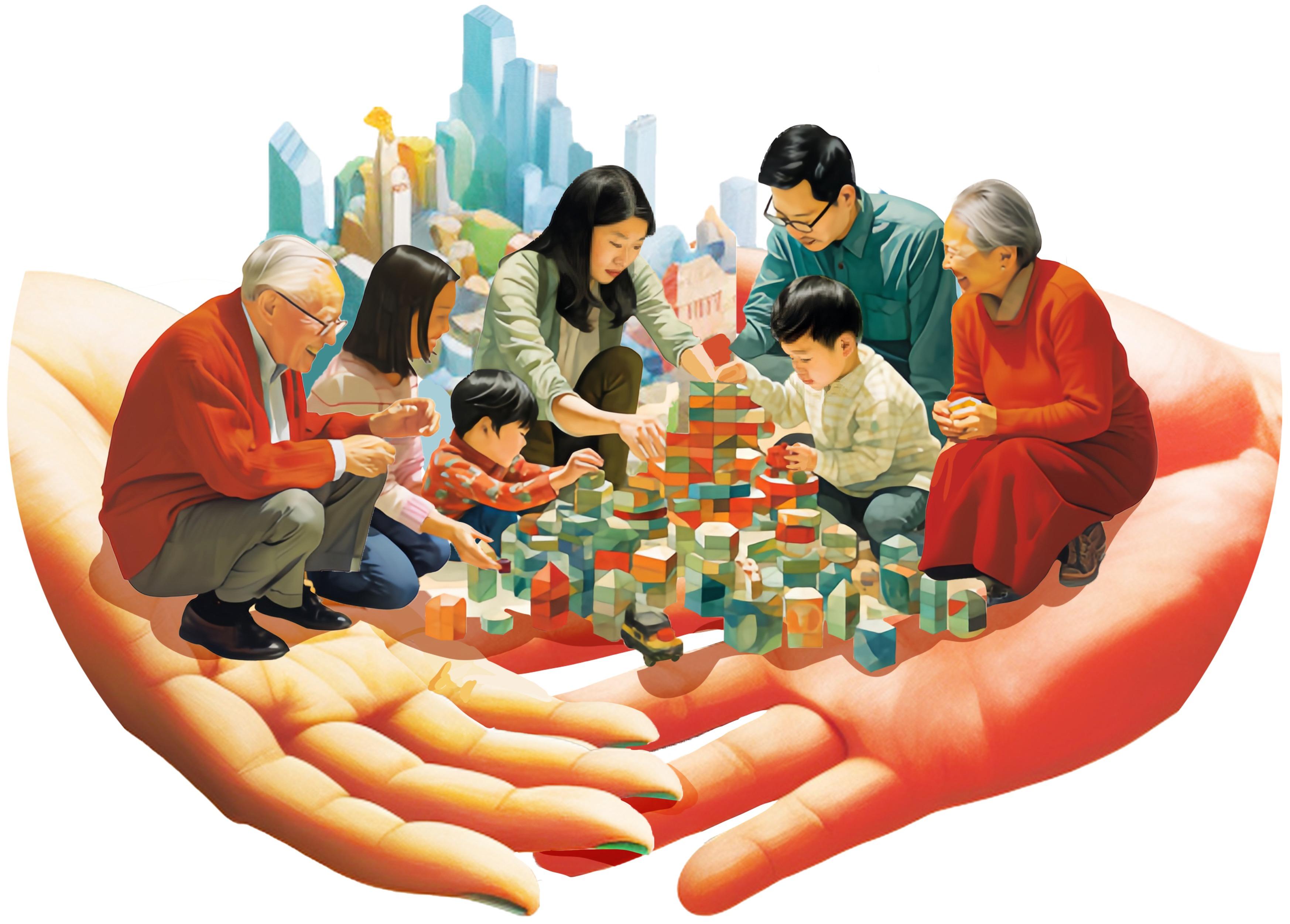Editor's note: This year marks the completion of two years since China adopted the three-child policy, which allows couples to have three children, with the aim of optimizing the country's demographic structure and achieving long-term and balanced population development. The policy and supporting measures focus on strengthening childcare services and reducing the cost of childbearing. Three experts share their views on the issue with China Daily.
 (MA XUEJING / CHINA DAILY)
(MA XUEJING / CHINA DAILY)
The declining marriage and fertility rates in China have become issues of greater concern in recent times due to negative population growth, a shrinking workforce and a fast rising aging population. According to the Ministry of Civil Affairs, the number of marriages in China in 2022 was 6.83 million, the lowest since 1986. It also marks the ninth consecutive year of declining marriages since the recent peak of 13.46 million in 2013.
The latest data highlight the complex issues of low fertility rates and negative population growth. Marriage and childbirth are not just personal matters but also critical national issues, as they are related to sustainable overall development in the long run.
China's demographic trend is one of "low marriage rate, even lower fertility rates and a fast rising aging population". Complicating this is the decision of many to marry and have children at a later age. Young people today tend to build their careers before starting a family. Many couples even decide not to have any kids, increasing the number of "DINK" (double-income, no-kids) families.
China entered an irreversible phase of low fertility rate in the early 1990s, which has created significant demographic challenges. Even the government's decision to further ease the family planning policy by allowing all couples to have three children has not yielded the desired result. And the seventh national census data show that the average family size has dropped below three individuals, signaling the emergence of a society characterized by empty nests and single individuals in a country of more than 1.4 billion people.
At the same time, population decline has become increasingly serious. The working-age population (people between 16 and 59 years old) has decreased by tens of millions since 2012 due to the declining total fertility rates. Another factor of concern is the skewed gender ratio, with a further decline in the relative population of women.
The seventh national census data show that China's total fertility rate was only 1.3 in 2020. But the actual situation might be worse (the total fertility rate for 2021 was about 1.15 and that for 2022 about 1.1). This means China faces a dual challenge of relative and absolute population decline, including a decline in the proportion of the population aged 0-14 years, as well as a decline in fertility both in terms of rates and numbers.
From 2010 to 2020, the number of women aged between 15 and 49 years decreased by 57.49 million, with an average annual decrease of 5.75 million women of childbearing age. In 2010, there were 113.58 million women in their peak childbearing years (20-29 years), while in 2020, their number dropped to 78.95 million, down 34.63 million in a decade at an average of 3.46 million a year.
With the two-child and three-child policies not producing the desired outcome, China has not been able to reverse the downward trend of new births, which has been declining since 2017. In fact, last year, the number of new births reached a historic low of 9.56 million, down 1.06 million year-on-year, with the total population decreasing by 850,000, marking the onset of negative growth.
China is experiencing a chronic demographic decline. If the average fertility level remains below the replacement level for an extended period of time, the eventual outcome will be population decline. It is important to urgently address the challenges posed by this trend, by encouraging youths to marry at what is considered an ideal age and have two to three children. But for that, the government has to offer some subsidies to couples with two or three kids, especially subsidies for children's education.
Building a marriage- and childbirth-friendly society that shares the burden of childrearing for couples is key to reversing the trend of declining new births. As we observe World Population Day on July 11, Africa continues to struggle to control population growth and reduce poverty, while China makes efforts to arrest population decline. But China has no option but to implement policies to help increase the marriage and birth rates, in order to sustain its high-quality economic development.
The author is a professor of demography at the Institute of Population Research of Peking University.
The views don't necessarily represent those of China Daily.



